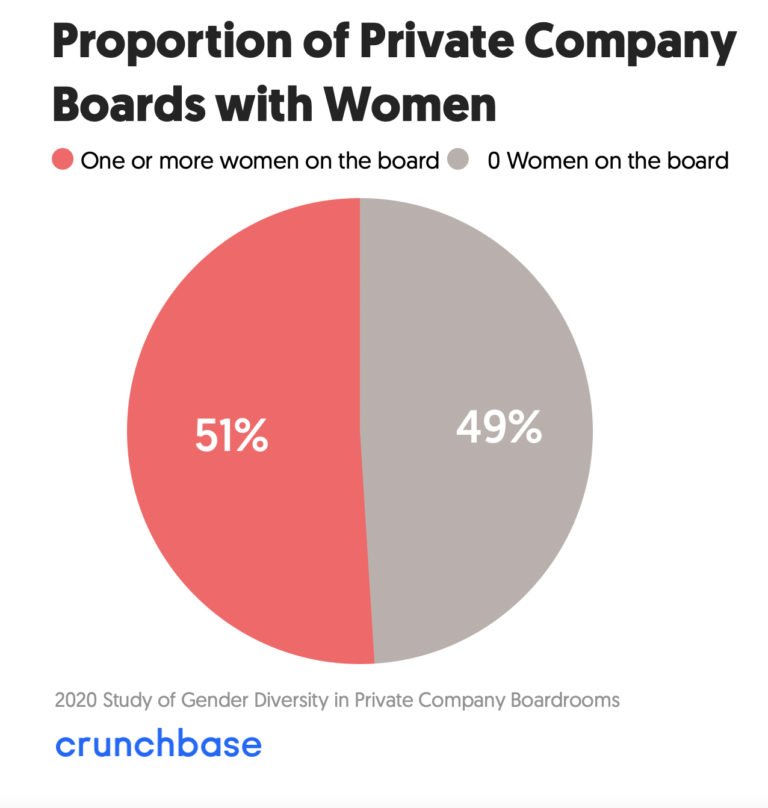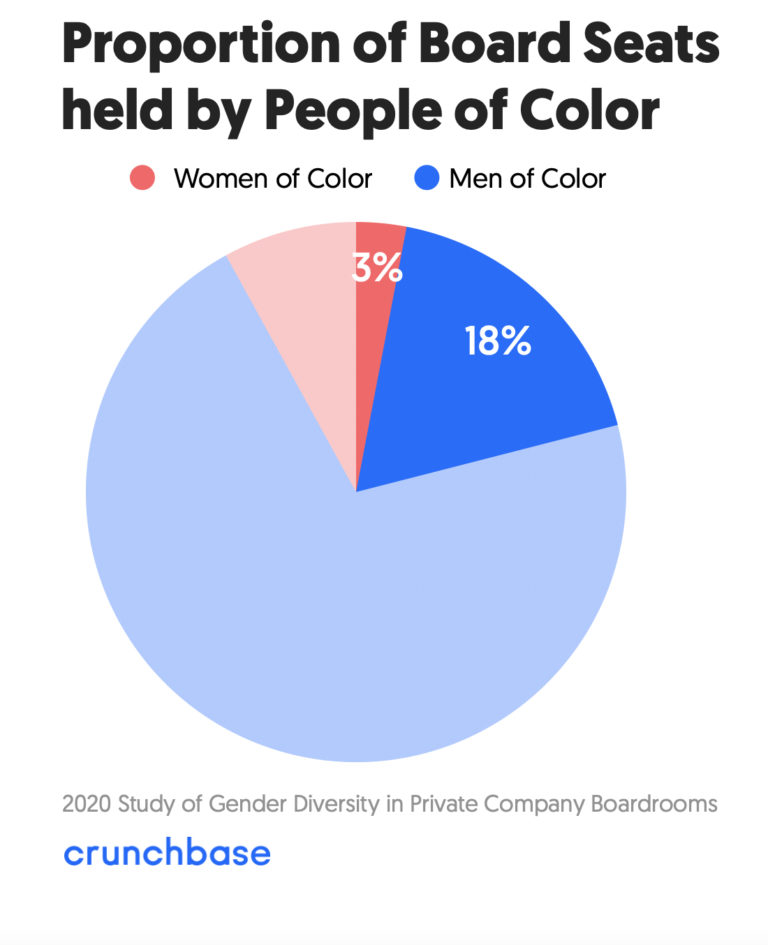Despite modest progress, women – especially women of colour – remain absent from half of private company boards in the US, and lag dramatically behind public companies.
According to the Him For Her and Crunchbase annual Study of Gender Diversity on Private Company Boards, women held only 11% of 2,457 board seats in 2020; up from 7% in 2019. However, the percentage of companies that include at least one woman on the board of directors rose from 40% in 2019 to 51% in the most recent study.
Despite the progress, dramatic gender imbalance persists in the boardroom, as nearly half of the private companies boards remain all-male (49%). Among the boards that include women, 66% have only one woman on the board. While that’s an improvement from 76% compared to the year before, most women board members remain “the only” woman in the boardroom. Additionally just 18% of private company boards comprised two or more women. Although many studies suggest that boards need at least three women to benefit from the full benefits of diversity, only 6% of firms in this study met that criteria.

SCARCE REPRESENTATION OF WOMEN OF COLOUR
“The modest improvements we’ve seen over the last year suggest private companies are starting to address the lack of board diversity. But, at this rate, it will take another ten years to reach gender parity,” stated Ann Shepherd, co-founder of social impact venture Him For Her. “Meanwhile most private-company boards don’t include a single woman of colour. In fact, only 3% of private company board seats are held by women of colour; compared to an estimated 18% held by men of colour; 81% of companies don’t have a woman of colour on the board at all.
Shepherd said “there’s no shortage of talented women ready for board service”. Business leaders “simply need to look beyond their personal networks”, she advised. Company founders and investors comprised 75% of the board seats, of which 8% were held by women. Women were more likely to hold independent board seats, but were still outnumbered among those by four to one.
The study also analysed board members by type; including executive directors, investor directors and independent directors. It found that women were underrepresented in every category. Investors made up the largest number of private company directors with 53% of seats, of which women held just 9%.

CORRECTING BOARD GENDER IMBALANCE
In a shift from last year, however, independent directors gained share and accounted for the second largest group with 25% of board seats, of which women held 20%. Executive directors accounted for the smallest group with 22% of board seats, of which women only held 7%. The fact that the gender mix among independent directors is slightly less extreme than among investors and executive directors “may point to the opportunity some companies are taking to introduce more diversity to the boardroom through the addition of independent seats”, noted the report. The percentage of companies that had at least one independent director grew from 71% to 84% over the last year, contributing to the growth of diversity of independent seats.
“This study shows initial progress toward correcting the gender imbalance on private company boards; but it reveals substantial room for growth,” stated Gené Teare, Senior Data Journalist at Crunchbase. “Studies like this are critical for continuing to keep shareholders accountable. At Crunchbase, we believe data is essential to shed light on these issues and encourage changes that lead to a more diverse and equitable private sector.”
Click here to read the full report.








































